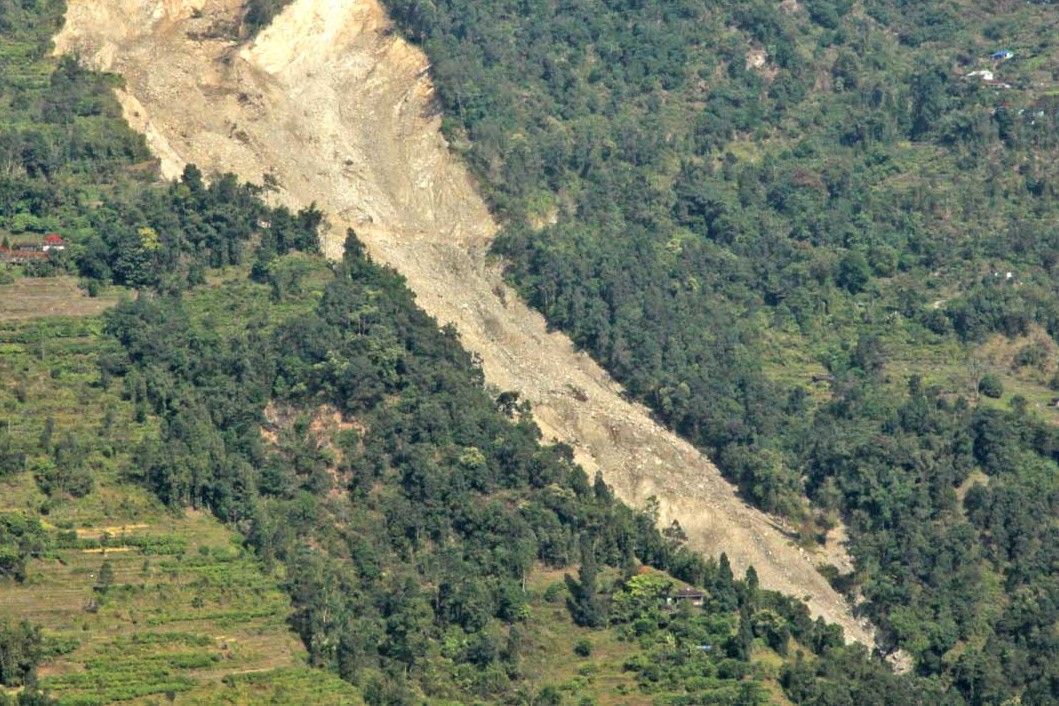UCLA scientists have developed an advanced technique that implements artificial intelligence in predicting the locations and causes of landslides, potentially enhancing preventive measures for preserving lives and properties in some of the most calamity-prone regions globally.
Outlined in a publication within the scientific journal Communications of Earth and Environment, the recently unveiled approach enhances the precision and comprehensibility of artificial intelligence-powered machine learning methods, whilst demanding considerably lower computing power and demonstrating widespread applicability compared with established prediction models.
Scientists have highlighted that the proposed methodology would be of utmost importance primarily in locations like California, wherein severe environmental factors including drought, wildfires, and earthquakes culminate in predisposing the areas to landslides, an issue that is expected to exacerbate with the intensification of climate change as stronger and more humid storms materialize.
Multiple factors can shape the location of landslides, encompassing the configuration of the topography, its incline and water distribution system, soil and bedrock characteristics, and dynamic surroundings including climate, precipitation, hydrology, and ground vibrations brought about by seismic activities. With such an extensive range of variables at play, anticipating when and where a rock mass may disintegrate is a form of both scientific reasoning and an intuitive art form.
Geologists have conventionally assessed the possibility of an area experiencing landslides by assimilating the above factors into statistical and physical models. While statistical models can create predictions with relative accuracy if given sufficient information, they fall short of identifying the interrelation between hazard factors and outcomes. Physical models, instead, are extremely expensive and demand considerable time and resources, thereby limiting their applicability over larger areas.
Applying Artificial Intelligence for Landslide Forecasting
In recent times, AI experts have equipped “deep neural networks” (DNNs) – a type of machine learning model – to anticipate landslides. DNNs operate by assimilating extensive previous landslide data and multiple variables that impact landslides, allowing the networks to deliver fast and comprehensive analyses, resulting in sound, highly precise predictions.
Notwithstanding the expeditious computations and assimilation potential of DNNs, akin to conventional statistical models, these algorithms lack transparency in illustrating the path to their decisions. This ambiguity presents researchers with the challenge of comprehending the DNNs’ predictions and ascertaining the key areas that require the most attention to counter future landslide susceptibility.
As stated by Kevin Shao, one of the co-first authors of the academic publication, “DNNs will deliver a percentage likelihood of a landslide that may be accurate, but we are unable to figure out why and which specific variables were most important in causing the landslide,”
Co-first author, Khalid Youssef, a postdoctoral researcher at UCLA, raises a valid concern, stating that since DNNs’ numerous layers constantly interact during the training process, it becomes insurmountable to separate the specific factors contributing to the prediction. Furthermore, Youssef and his colleagues at UCLA resolved to find a solution to this constraint, which prompted them to develop a new methodology.
“We sought to enable a clear separation of the results from the different data inputs, which would make the analysis far more useful in determining which factors are the most important contributors to natural disasters,” he said.
Youssef and Shao collaborated with co-corresponding authors, Seulgi Moon, an Associate Professor of Earth, Planetary, and Space Sciences, and Louis Bouchard, a Professor of Chemistry and Bioengineering at UCLA, to develop an innovative technique with the capability of segregating the robust analytical abilities of DNNs from their intricate and adaptive characteristics. This method endeavored to deliver practical outcomes to facilitate swift implementation and execution of predictions.
The team’s approach employs a superposable neural network (SNN), a variant of AI, wherein the separate layers of the neural network operate in parallel, independently analyzing numerous data inputs to illustrate the intricate correlations among them, ultimately arriving at a conclusion by the endpoints’ convergence. This technique’s uniqueness lies in its ability to maintain the network’s complete analytical power while effectively resolving the DNNs’ challenge of being indecipherable, facilitating streamlined decision-making processes.
To test their methodology’s functionality, the study authors supplied the SNN with approximately 15 geospatial and climatic variables relevant to the Eastern Himalayan Mountains—the chosen region since a considerable portion of landslide-related fatalities occuring in Asian regions, with the most extensive areas in the Himalayas. The SNN successfully forecasted landslide susceptibility for Himalayan locations almost as accurately as that rendered by DNNs, yet its most significant triumph was enabling researchers to determine the leading variables that impacted the prediction process, providing greater insight into the problem and potential future prediction models.
As per Seulgi Moon, a researcher and study author, akin to an autopsy that provides conclusive evidence of a demise’s cause, determining the precise origin of a landslide will inevitably necessitate in-field measurements and historical record-keeping of the climatic, hydrologic, and soil conditions such as rainfall intensity and volume, an arduous task that proves especially challenging in regions such as the Himalayas. Regardless of these challenges, their new AI model for landslide prediction effectively extracts key variables while quantifying their impact towards determining the landslide susceptibility, paving the way for an efficient system in dealing with natural disasters.
Furthermore, the developers’ novel AI mechanism requires far fewer computer resources than traditional DNNs, making it much more cost-effective and efficient in terms of hardware requirements by operating on relatively limited computing power.
According to Louis Bouchard, a UCLA Professor and one of the authors of the study, unlike DNNs, which depend on high-end processing servers to manage their training, the SNN model is so small that it can operate on an Apple Watch.
The researchers intend to extend their research and monitor other landslide-prone regions worldwide, such as California, where the increased land instability arising from frequent wildfires and earthquakes creates a continual risk, while similar areas, that can benefit from this new system stand to generate early warning systems capable of predicting multiple hazardous events including floods, expediting response management and mitigation strategies.
#ArtificialIntelligence #AI #Geologists




